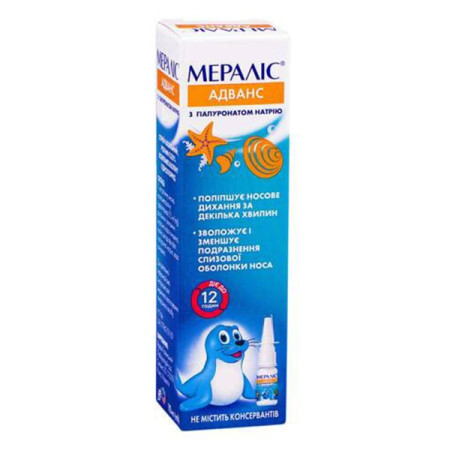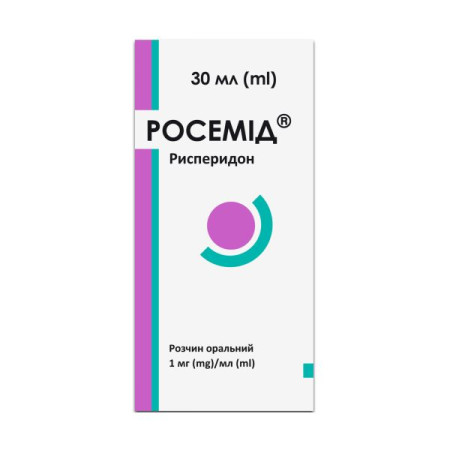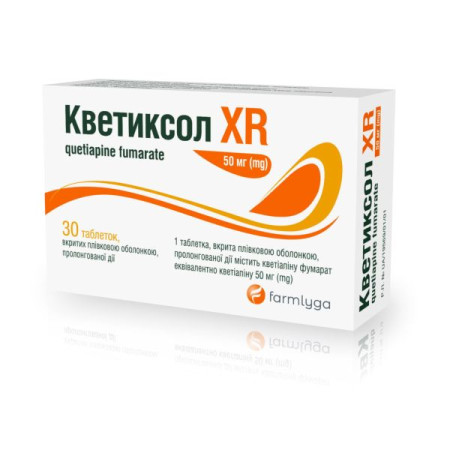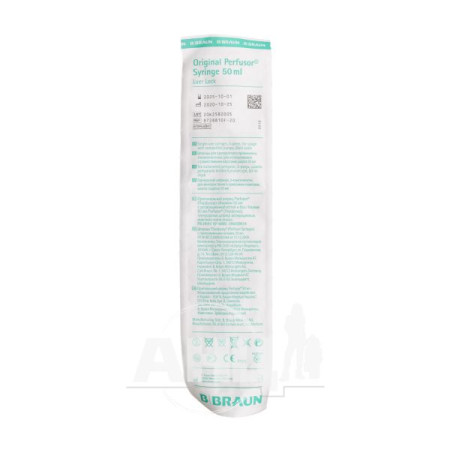Infanrix IPV Hib suspension for injection syringe 0.5 ml with 2 needles + lyophilized powder vial No. 1

Instructions Infanrix IPV Hib suspension for injection syringe 0.5 ml with 2 needles + lyophilized powder vial No. 1
Composition
active ingredients:
0.5 ml (1 dose) of reconstituted vaccine contains:
diphtheria toxoid (D) not less than 30 international units (IU) (25 Lf (flocculating units));
tetanus toxoid (T) not less than 40 IU (10 Lf);
pertussis toxoid (PT) 25 mcg;
filamentous hemagglutinin (FHA) 25 μg;
pertactin (PRN) 8 μg;
inactivated poliovirus (IPV):
type 1 (Mahoney) 40 D-antigen units (DU), type 2 (MEF-1) 8 DU, type 3 (Saukett) 32 DU;
Haemophilus influenzae type b capsular polysaccharide (PRP) conjugate 10 μg, covalently linked to tetanus toxoid (T) adsorbed 25 μg;
excipients: lactose, sodium chloride, aluminum (in the form of salts: aluminum hydroxide) as Al3+, medium 199, water for injection.
Potassium chloride, disodium phosphate, monosodium phosphate, polysorbate 80, glycine, formaldehyde, neomycin sulfate, polymyxin sulfate are present in residual amounts as a result of manufacturing processes.
Dosage form
Suspension (DTPa-IPV) for injection and lyophilisate (Hib) mixed before use.
Main physicochemical properties: INFANRIX™ IPV Hib is a combination vaccine for the prevention of diphtheria, tetanus, pertussis (acellular component), poliomyelitis and diseases caused by Haemophilus influenzae type b.
DTPa-IPV is a cloudy liquid after shaking (in a syringe); a white precipitate and a colorless supernatant (supernatant) after sedimentation (precipitation). The lyophilized vaccine is presented as a white powder or briquette (in a glass vial). After reconstitution of the lyophilized Hib vaccine with DTPa-IPV liquid, it is a clear colorless liquid.
Pharmacotherapeutic group
Combined bacterial and viral vaccines. ATX code J07C A06.
Pharmacological properties
Pharmacodynamics
Diphtheria and tetanus toxoids, obtained from cultures of Corynebacterium diphtheriae and Clostridium tetani, are inactivated and purified. The components of acellular pertussis vaccine (PT, FHA, pertactin) are prepared by growing a phase I culture of Bordetella pertussis, from which PT, FHA and pertactin are extracted and purified. FHA and pertactin are treated with formaldehyde, PT is treated with gluteraldehyde and formaldehyde and irreversibly inactivated.
Three polioviruses are cultured on the Vero transfection line, purified, and inactivated with formaldehyde.
Hib polysaccharide is prepared from Haemophilus influenzae type b, strain 20752, and combined with tetanus toxoid. After purification, the conjugate is lyophilized in the presence of lactose as a stabilizer.
The results obtained in clinical trials for each of the vaccine components are presented in the tables below.
Table 1
Number (percentage) of subjects with antibody titers ≥ control levels after primary vaccination with INFANRIX™ IPV Hib
Antibody level | 3-5 months, N=86 (1 study) % | 1.5-3.5-6 months, N=62 (1 study) % | 2-3-4 months, N=337 (3 studies) % | 2-4-6 months, N=624 (6 studies) % | 3-4-5 months, N=127 (2 studies) % | 3-4,5-6 months, N=198 (1 study) % |
Against diphtheria toxoid (0.1 IU/ml)* | 94.1 | 100 | 98.8 | 99.3 | 94.4 | 99.5 |
Against tetanus toxoid (0.1 IU/ml)* | 100.0** | 100 | 99.7 | 99.8 | 99.2 | 100 |
Against pertussis toxoid (5 EL. O/ml) | 99.5** | 100 | 99.4 | 100 | 98.4 | 100 |
Against filamentous hemagglutinin (5 EL. O/ml) | 99.7** | 100 | 100 | 100 | 100 | 100 |
Against pertactin (5 EL. O/ml) | 99.0** | 100 | 100 | 100 | 100 | 100 |
Against poliovirus type 1 (1:8 dilution)* | 93.0 | n/a | 99.1 | 99.5 | 100 | 100 |
Against poliovirus type 2 (1:8 dilution)* | 95.3 | n/a | 95.7 | 99.0 | 99.2 | 100 |
Against polio virus type 3 (1:8 dilution)* | 98.8 | n/a | 100 | 100 | 99.2 | 99.4 |
Against PRP (Hib) (0.15 mcg/ml)* | 83.7 | 100 | 98.5 | 98.5 | 100 | 98.4 |
Against PRP (Hib) (1.0 mcg/ml) | 51.2 | 87.1 | 68.5 | 76.0 | 97.6 | 81.2 |
N – number of patients;
n/a – no data;
* levels sufficient to protect against the pathogen;
** results after the second dose in studies in which DTPa-HBV-IPV+Hib was administered at 3, 5 and 11 months of age.
Table 2
Number of individuals (percentage) with antibody titers ≥ control levels after booster vaccination with INFANRIX™ IPV Hib
Antibody level | Revaccination at 11/12 months of life after 3-5-month primary vaccination course, N=184 (1 study) % | Revaccination during the second year of life after three doses of the primary vaccination course, N=1326 (9 studies) % |
Against diphtheria toxoid (0.1 IU/ml)* | 100 | 99.8 |
Against tetanus toxoid (0.1 IU/ml)* | 99.9** | 99.9 |
Against pertussis toxoid (5 EL. O/ml) | 99.7 | |
Against filamentous hemagglutinin (5 EL. O/ml) | 99.9** | 100 |
Against pertactin (5 EL. O/ml) | 99.5** | 99.9 |
Against poliovirus type 1 (1:8 dilution)* | 99.4 | 99.9 |
Against poliovirus type 2 (1:8 dilution)* | 100 | 100 |
Against polio virus type 3 (1:8 dilution)* | 99.4 | 100 |
Against PRP (Hib) (0.15 mcg/ml)* | 100 | 100 |
Against PRP (Hib) (1.0 mcg/ml) | 96.7 | 99.2 |
N – number of patients;
* levels sufficient to protect against the pathogen;
** results after 3 doses in studies in which DTPa-HBV-IPV+Hib was administered at 3, 5, and 11 months of age.
The efficacy of the Hib component (combined with DTPa, DTPa-IPV or DTPa-HBV-IPV) was studied in a large post-marketing surveillance study conducted in Germany. After a follow-up of over 4.5 years, the efficacy of the DTPa+Hib or DTPa-IPV+Hib vaccines was 96.7% after the full primary vaccination course and 98.5% after the booster dose (irrespective of the primary vaccination). After a follow-up of over 7 years, the efficacy of the Hib components of the two hexavalent vaccines was 89.6% after the full primary vaccination course and 100% after the full primary vaccination course plus booster dose (irrespective of the Hib vaccine used for the primary vaccination).
Pharmacokinetics
Pharmacokinetic properties are not evaluated for vaccines.
Indication
INFANRIX™ IPV Hib is indicated for active immunization of children aged 2 months and older against diphtheria, tetanus, pertussis, poliomyelitis and infections caused by Haemophilus influenzae type b.
INFANRIX™ IPV Hib is also indicated for revaccination of children who have previously been vaccinated against pertussis, diphtheria, tetanus, poliomyelitis and diseases caused by Haemophilus influenzae type b.
INFANRIX™ IPV Hib does not protect against diseases caused by other types of Haemophilus influenzae or meningitis caused by other pathogens.
Vaccination of children in Ukraine is carried out in accordance with the requirements of current orders of the Ministry of Health of Ukraine.
Contraindication
INFANRIX™ IPV Hib should not be administered to individuals with known hypersensitivity to any component of the vaccine or to individuals who have shown signs of hypersensitivity after previous administration of diphtheria, tetanus, pertussis, inactivated polio vaccine or Hib vaccine.
INFANRIX™ IPV Hib is contraindicated for vaccination of children who have developed encephalopathy of unknown etiology within 7 days after previous vaccination with a vaccine containing a pertussis component.
As with other vaccines, the administration of INFANRIX™ IPV Hib should be postponed in individuals with acute severe illness accompanied by fever. However, the presence of a minor infection is not a contraindication.
Interaction with other medicinal products and other types of interactions
In accordance with the currently accepted practice in pediatrics of simultaneous vaccination with different vaccines, INFANRIX™ IPV Hib can be administered simultaneously with the vaccine for the prevention of hepatitis B. The diluted INFANRIX™ IPV Hib vaccine and the other vaccine for injection should be administered at different sites.
As with other vaccines, an adequate immune response may not be achieved in patients receiving immunosuppressive therapy or in patients with immunodeficiency.
Application features
According to good clinical practice, vaccination should be preceded by a medical history (especially regarding previous vaccination and possible cases of adverse reactions) and a physical examination.
INFANRIX™ IPV Hib should be administered with caution to individuals with thrombocytopenia or bleeding disorders, as bleeding may occur when the vaccine is administered intramuscularly to such individuals.
INFANRIX™ IPV Hib contains trace amounts of neomycin and polymyxin, therefore the vaccine should be administered with caution to individuals with known hypersensitivity to any of these antibiotics.
As with all injectable vaccines, in the event of anaphylactic reactions following vaccine administration, the patient should be observed for at least 30 minutes and appropriate treatment should be available.
Syncope (loss of consciousness) may occur during or before any injectable vaccination as a psychogenic reaction to the needle injection. Vaccination should only be performed with the vaccinee in a sitting or lying position and should be maintained in the same position (sitting or lying) for 15 minutes after vaccination to prevent trauma.
As with all diphtheria, tetanus, and pertussis vaccines, this vaccine should be administered deep intramuscularly in the anterolateral thigh. It is advisable to rotate the injection site each time.
The expected immunological response may not be elicited after vaccination of immunosuppressed patients, such as those taking immunosuppressants.
temperature ≥40.0°C (rectal measurement) within 48 hours of vaccination, not associated with other identifiable causes; collapse or shock-like state (hypotonic-hyporesponsive episode) within 48 hours of vaccination; persistent, continuous crying of the child lasting ≥3 hours within 48 hours of vaccination; convulsions with or without fever developing within 3 days of vaccination.
However, because these reactions are not associated with irreversible consequences, there may be circumstances (e.g., high incidence of pertussis) in which the potential benefits of vaccination would outweigh the potential risks.
In children with progressive neurological conditions, including infantile spasms, uncontrolled epilepsy, or progressive encephalopathy, immunization with pertussis (acellular or whole cell) should be postponed until the child's condition has stabilized. However, the decision to administer pertussis vaccine should be made on an individual basis, carefully weighing the risks and benefits.
The Hib component does not protect against diseases caused by other types of Haemophilus influenzae infection or against meningitis caused by other microorganisms.
A history of febrile seizures in a child, a family history of seizures, a family history of sudden infant death syndrome (SIDS), or a family history of adverse reactions to DTP, IPV, and/or Hib vaccines are not contraindications to vaccination.
HIV infection is not a contraindication for vaccination.
Urinary excretion of capsular polysaccharide antigen has been described after administration of Hib vaccine, therefore, within 1-2 weeks after vaccination, determination of this antigen in urine in cases of suspected Hib infection may not be of diagnostic value.
INFANRIX™ IPV Hib should not be administered intravenously under any circumstances.
When prescribing primary immunization to premature infants (≤ 28 weeks of gestation), the potential risk of apnea and the need for respiratory function monitoring for 48-72 hours after vaccination should be considered, especially if the infant has a history of respiratory failure. Since the benefit of vaccination in this group of infants is high, vaccination should not be withheld or delayed.
INFANRIX™ IPV Hib contains less than 1 mmol (23 mg) sodium/dose, i.e. essentially sodium-free.
Ability to influence reaction speed when driving vehicles or other mechanisms
The drug is used for children.
Use during pregnancy or breastfeeding
Since INFANRIX™ IPV Hib is not intended for use in adult women, there are no data on the safety of the vaccine during pregnancy or lactation.
Method of administration and doses
The primary vaccination schedule includes 3 doses of the vaccine, administered in the first six months of life and can be administered from the age of 2 months. An interval of at least 1 month should be maintained between doses.
A booster dose is recommended during the second year of life, no earlier than 6 months after the completion of the primary vaccination course.
INFANRIX™ IPV Hib is administered by deep intramuscular injection into the anterolateral thigh. It is preferable that each subsequent dose be administered at a different site.
INFANRIX™ IPV Hib should be administered with caution to individuals with thrombocytopenia or bleeding disorders, as bleeding may occur when the vaccine is administered intramuscularly to such individuals. The injection site should be pressed firmly (without rubbing) for at least two minutes.
Instructions for preparing the vaccine before use.
Hib vaccine lyophilisate, DTPa-IPV vaccine suspension and reconstituted INFANRIX™ IPV Hib combination vaccine should be inspected visually for any foreign particulate matter and/or variation of physical appearance. If such variation is present, the vaccine should not be used.
Since a precipitate may form in the DTPa-IPV suspension during storage, it must be shaken before dissolving the Hib vaccine lyophilisate in it.
The preparation should be reconstituted by adding the entire contents of the container containing the DTPa-IPV component to the vial containing the Hib vaccine lyophilisate. Only components of one vaccine should be mixed together, without using other vaccines or components of another batch of the same vaccine. After adding the DTPa-IPV suspension to the Hib vaccine lyophilisate, the mixture should be shaken well to mix the contents.
The reconstituted INFANRIX™ IPV Hib vaccine is a more cloudy suspension than the liquid DTPa-IPV component alone. This does not affect the quality of the vaccine. If other changes in the appearance of the vaccine are observed, it should not be used.
The vaccine should be used immediately after reconstitution.
To inject, draw the entire contents of the vial into the syringe. Remove and discard the first needle used to mix the vaccine components. Attach another needle to perform the injection.
Any unused product or waste material should be disposed of in accordance with local requirements.
Children
INFANRIX™ IPV Hib is for use in children from 2 months of age (see section “Indications”). INFANRIX™ IPV Hib is not recommended for use in adults, adolescents and children from 5 years of age.
Overdose
Several cases of overdose have been reported from post-licensure pharmacovigilance. The adverse events observed with overdose were similar to those observed with the recommended doses of Infanrix™ IPV Hib.
Adverse reactions
Clinical trial data
The vaccine safety profile presented below is based on data from more than 3,500 individuals.
As with any DTPa vaccine or DTPa-containing combination vaccine, an increase in local manifestations and the incidence of fever (compared to primary immunization) was observed with a booster dose of INFANRIX™ IPV Hib.
Adverse reactions observed with the use of the vaccine are listed according to the frequency of development:
Very common: ≥ 1/10 Common: ≥ 1/100 to < 1/10 Uncommon: ≥ 1/1,000 to < 1/100 Rare: ≥ 1/10,000 to < 1/1,000 Very rare: < 1/10,000
Infectious and parasitic diseases
Uncommon: upper respiratory tract infections.
Disorders of the circulatory and lymphatic systems
Uncommon: lymphadenopathy.
Metabolic and nutritional disorders
Very common: loss of appetite.
Mental disorders
Very common: increased excitability, continuous crying, restlessness.
Nervous system dysfunction
Very common: insomnia.
Respiratory, thoracic and mediastinal disorders
Uncommon: cough, bronchitis, rhinorrhea.
Gastrointestinal disorders
Common: diarrhea, vomiting.
Skin and subcutaneous tissue dysfunction
Uncommon: rash, urticaria.
Rare: itching, dermatitis.
General disorders and administration site conditions
Very common: injection site reactions such as pain and redness, local swelling (≤ 50 mm), fever (≥ 38 °C).
Common: injection site reactions such as infiltrate, local swelling (>50 mm)1.
Uncommon: fever2 (> 39.5 °C), fatigue, diffuse swelling of the injected limb, sometimes involving the adjacent joint1.
Post-marketing surveillance data
Disorders of the circulatory and lymphatic systems
Thrombocytopenia4.
Immune disorders
Allergic reactions (including anaphylactic3 and anaphylactoid reactions).
Nervous system dysfunction
Convulsions (with or without fever), collapse or shock-like state (hypotonic-hyporesponsive episode).
Respiratory, thoracic and mediastinal disorders
Apnea3 (see section “Special warnings and precautions for use” for apnea in premature infants (≤ 28 weeks of gestation)).
Skin and subcutaneous tissue disorders
Angioedema3.
General disorders and administration site conditions:
Swelling of the entire limb into which the vaccine was administered1, vesicles at the injection site3.
1Children who received primary immunization with acellular pertussis vaccine are more likely to develop swelling or edema-like reactions after a booster dose compared with children who received primary immunization with whole-cell pertussis vaccine. These reactions resolve on average within 4 days.
2often during revaccination.
3 were observed with the use of DTPa-containing vaccines manufactured by GlaxoSmithKline.
4 was observed with the use of diphtheria and tetanus vaccines.
Expiration date
36 months. The expiration date of the vaccine is indicated on the packaging.
Storage conditions
INFANRIX™ IPV Hib vaccine should be stored at 2 to 8°C. Recommended storage conditions should be followed during transportation. DTPa-IPV suspension and reconstituted vaccine should not be frozen. Do not use if vaccine has been frozen.
Packaging
Suspension (DTPa-IPV) for injection of 0.5 ml (1 dose) in a pre-filled disposable syringe complete with two needles and lyophilisate (Hib) in a vial, mixed before use.
Vacation category
According to the recipe.
Producer
GlaxoSmithKline Biologicals SA, Belgium.
Location of the manufacturer and its business address
Rue de l'Institut, 89 1330 Rixensart, Belgium.
There are no reviews for this product.
There are no reviews for this product, be the first to leave your review.
No questions about this product, be the first and ask your question.













